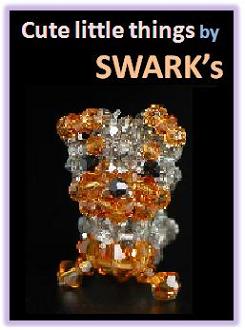I have written about designing LED circuits and DIY fabrication with the various components. Now that whole idea is made obsolete by the dropping cost of flexi strips LEDs. Back then, it was really not cost effective to buy a spool of flexi strip. Each 5050 LED was selling at about $1. Now, I just got some for $0.30 each and comes mounted on flexi strip complete with resisters and circuitry. Whats left to do, is to simply hook it up to a 12V power. Its that simple! Yikes!
Following my own harrowing experience on buying flexi strip LEDs, I thot I should share it with those of you who are considering to use LEDs, but are deterred by the seemingly difficult to understand technicalities.

1 strip of 5050 LEDs, cutout from a roll
Why is buying flexi strip LEDs difficult? I think the reasons are overwhelming selection, confusion over pricing, unsure of one’s needs, unsure of how to DIY install, put off by incompetant sales people and worry about being conned by installation crew.
Lets start by talking numbers. Without going into the technical nitty gritty, the visual size of each LED in a flexi strip is the best indicator of its brightness. Although they all look to be very bright, the bigger 5050 LED does shed more light and have a wider angle than the 3528 LED. These 2 types are the most common these days, but there are others that are smaller and meant for decorative purposes light christmas tree lights or car trim highlights.
IMHO, the 5050 LED is a better all rounder than 3528 series for lighting purposes, but it is more expensive and will consume more energy while producing less light per watt when compared to 3528. Anyway, they are both better than flourescent in flicker free, power consumption and longetivity.

Large selection of flexi strip LEDs in the market. Just 3 types that I got here.
Each spool is 5meters (or 16ft) from the factory. This is complete with LEDs and resister circuitry on board the strip that no assembly or soldering is needed. When buying a strip, have the sales person open a new package, light it up and you should check that all LEDs are lighted up. If you are getting a opened package, check the 1st link and last link for the connection leads that should be sticking out from the reel. There should be 1 red and 1 black, about 10cm each at the beginning and end of the spool. If not, then you have missing links… dont buy that spool.
This picture shows 2 strips of 5050 LEDs (notice they are larger dots than the 3528). The one on top is cut from clear sleeved 30 LEDs per meter spool, and the middle is cut from a 60 LEDs per meter spool. The bottom one is 3528 LEDs from a 60LEDs per meter spool.
The next number to consider is the count of LED per meter or per spool. The usual number per meter is 30, 60, 90 and 120 SMD. SMD stands for Surface Mount Devices. The higher count means that more LEDs are packed into each metre. Normally, there are 3 SMD on each link, therefore a 30 SMD/metre strip = 3 SMD for every 10cm. … and a 120 SMD/metre strip will have 3 SMD per 2.5cm. And sure we know, the higher SMD count, the more expensive is the spool. Each SMD is a commodity, the more you get, the more you pay.
So far, I found that the prices on Amazon.com to be pretty good. I use that as a benchmark price and shop around in Sim Lim Towers. Ask around and walk away if the offered price is not good or the sales staff is lousy… I can tell you that they mostly are technical snobs, altho they might not know what differentiate they products and pricing. I did find one shop that offered a better price than Amazon for LEDs and a lousy price on power supplies to the LEDs and they did try to sell me a larger supply than was necessary… naturally, I only bought the LEDs… see, it pays to do your homework before going into the den of ……. Another personal comment, I found the pricing of old stock to be fantastic on Amazon. Like the 60SMD 3528 is going for less than local prices even after adding the shipping cost (varies a lot, depending on quantity and freight company, shopping for a freight forwarder is another subject altogether).
But really, what does more SMD per strip mean to you in terms of lighting? If the application is spot lighting, I would go for a 60SMD 5050 or 120SMD 3528 arranged in a tight square configuration. If what I wanted is to light the area on my desk, I would use 60SMD 5050 or 120 SMD 3528 running in a strip or 2 strips spaced 5-10cm apart, for almost the length of my desk. I will have to mount it under a shelf… I dun like sticking the LEDs to the ceiling for this application, I like a more table lamp kind of feel and not light up the whole room feeling.
Now, for lighting up the room with a more distributed light effect, I would use a 30 SMD 5050 or 60 SMD 3528. Well, this really depends the ambience that you want for the space. Can have a nice soothing warmwhite thats just about the right amount of brightness, or a glaring white workspace… so you will have to decide on where to place the strips to achieve the desired effect. .. and it helps to sorta have a placement and routing plan before you speak to the installation contractor. If you dont have a plan, they are going to sell you lots more LEDs, wiring and circuitry that you may never use.
Yup, you will need a “adapter” for 240V down to 12V. Nope you cant connect the LEDs to the mains. My plan is to have 1 adapter for each room. 5Amps will be plenty for a bedroom, 1 Amp will do for a loo or small storeroom.























